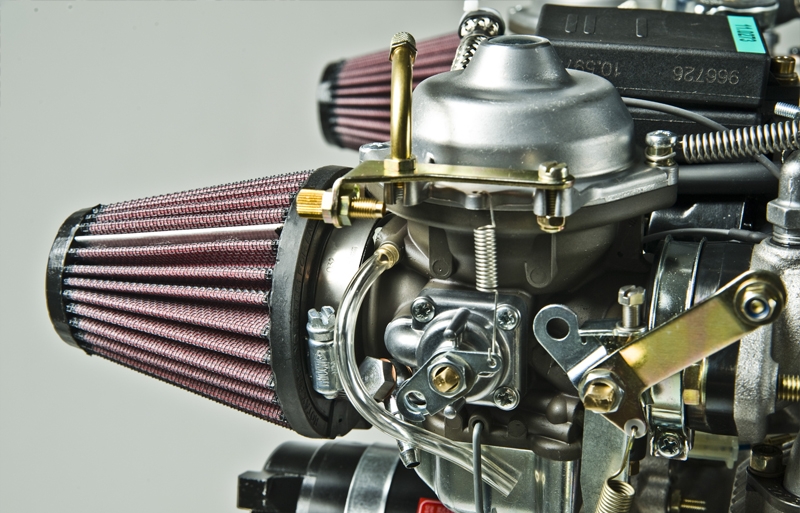-
Posts
3,170 -
Joined
-
Last visited
-
Days Won
29
Content Type
Profiles
Forums
Gallery
Downloads
Blogs
Events
Store
Aircraft
Resources
Tutorials
Articles
Classifieds
Movies
Books
Community Map
Quizzes
Videos Directory
Posts posted by Downunder
-
-
As I was trying to imply, pilots and aircraft owners are very culturally risk adverse.
You are making statements AGAINST what aircraft manufacturers and aircraft engine manufacturers approve.
When I came into aviation, I was like you. I thought I would be getting into cutting edge technology when the exact opposite is true......carby fed engines in 2020? Who would have thought......
Lead acid and their derivatives have been working perfectly adequately for more than a few decades in aircraft.
Alot of aviation technology is based on a history of reliability over efficiency.......you will learn this.
Things change very very slowly....in aviation.
As was stated previously a fire at 8500 feet is potentially fatal.
You can't just walk away from it.....
Experimentation is great, but it needs to be acknowledged as such......
-
 1
1
-
 2
2
-
-
-
I am a industry user (non aviation) of batteries. Comms, remote sites, high temp environments.
The biggest industry problem is people confusing LiFePO4 (3.25 terminal voltage, 3.65 max) with "lithium poly and lithium ion' (3.7V terminal, 4.1 / 4.2V max) .
They have very different behaviours, they are very different batteries.
I would have a LiFePO4 battery in my plane any day. They are essentially unconditionally stable and safe. I would rather not have a Lead Acid because of the rather nasty failure modes. I would NOT permit a 'Lithium ion' in my plane. No way. Not ever.
pronounced - LiFePO4 "Life - poh" and Lithium Ion often referred as " lie-po" or "lie poly"
It's not about the batteries themselves, it's about aircraft charging systems designed for lead acid/agm batteries.
Different aircraft obviously have different charging and battery management systems too.
Aviation has very risk adverse culture (as it should be).
As you are new to aviation, making blanket statements that some readers may take at face value could be dangerous.
-
If you want to remove the float bowls easily, try and space the trays as low as you can or make them easily removable.
It's a pain if you want to check the bowls for any debris but need to remove the carb or tray....
-
 3
3
-
-
sealant on one face, not both, is a good idea
Yes, I should have made it clear. Sealant on the carby housing only. None on the bowl.
-
 1
1
-
-
The diaphragms have a moulded "tab" on the side. Make sure this goes back on the same side of the slide. It fits into a groove in the carb housing.
The cork gaskets can be a pain to seat correctly as the want to keep falling out when trying to fit the bowl.
You can pinch them and they will leak.
When I had the carb out, I turned it upside down on the bench, put a very small dob of sealant in each corner ( really small), fitted the gasket and bowl.
Left overnight. Now whenever I remove the bowl, the gasket stays perfectly in place.
-
 1
1
-
-
Wouldn't it be more practical to have a glider endorsement on an RAA certificate. Afterall, I can get a towing endorsement on a RAA aircraft. One membership fee, no club fees, no state association fee. If you closely examine the exemptions of 95.4 you are not really exempted from anything different than RAA except for ridge soaring and winch launches.
And lets throw powered paragliders (PPG) into the RAA system as well.......no need for the HGFA to hog that.....
We already have powered parachute (PPC).....
How many roles and administration activities are duplicated in the organisations? Must be a few.
Does CASA not want one powerful organisation?
-
 1
1
-
-
I wonder if those with a dual cable operation system could leave ONE cable system connected to ONE carb, over (or under) your linkages?
I this was possible, far more aircraft could use this system and it would be easy to fit by removing the throttle cable from one side and adding your linkages.
-
I don't know if this picture is any use to you but the only thing I would be worrying about that could upset this system you are proposing is if you start to get some vibration happening especially because you are putting a little bit of extra weight on the backend of the carburettor which could make the intake manifold more vulnerable to cracking.
Normally theres a tension spring from the balance clamp to the top carby screw to take some weight off the carb as pictured.
I can't see the weight of this device making much of a problem.
-
I can't see how you can check carb balance without isolating the balance tube?
-
Actually, I trust the RAAus more than I do CASA. Why? Because RAAus is funded by the likes of me and CASA is not.
I am actually the opposite. When there's money involved things are more likely to become distorted.
-
 1
1
-
-
-
and I reckon a smart guy could set it up so that you got a reminder when a radio call was required
Add a waypoint on your pink line where the call is required. Name the waypoint your frequency.
It won't become permanent on the map, just on that plan.
I use it for area frequency boundaries and QNH boundaries.....you could put it 10 nm out (or whatever) from airports as well with the ctaf freq.....
-
 4
4
-
 1
1
-
-
No seperate H/F Exam I think. Included with exams in RA Aus so no exam. I think quite some time ago it was seperate.
Andy
Yes, when it first came out I think I did it on my bfr.....
-
I attended a casa safety seminar and there was a powerpoint presentation about circuit separation (or something). Anyway, one of the case studies was a midair on final.
The WA rep is listed here if you want to find it....
https://www.casa.gov.au/education/aviation-safety-advisors-asa
-
-
Don't do it. I have Bose A20's with blue tooth it works but having the phone ringing in your ear while turning final or in the fair is very distracting. I have stopped using mine at all while flying.
The enviroment is a bit to noisy for much of a chat.
Pushing one button to disconnect bluetooth is a bit hard I guess......
But I agree for those that only fly circuits, there's not much point.....
-
These posts should be removed incase someone dowloads and uses them thinking that they are current.
-
 1
1
-
-
For the asking price you'd really have to be nuts to buy one of them (per state) over an Ozrunways subscription covering all of Aus.....
-
 1
1
-
-
Dragging up an old thread here, but has anyone replace the Carlisle 8.00x6 golf cart tyres with 6.00-6 aircraft tyres? Have heard they are slightly taller than the 8.00-6 and worried about them fitting inside the nose fork. Cheers, Jon.
Yes, Replaced my turfglides with 6.00 x 6 aircraft tyres. About 20mm clearance on front fork and clears the mudguards on the mains.
Would never go back to carlisles......
-
.......trade the low wing for a high wing?....... just saying......

-
 2
2
-
 1
1
-
-
There's zillions of these Rotax engines around the world, can't be too much of a problem vapour lock surely?
I believe low wings are more of a problem as fuel needs to be "sucked" up from the wing tanks. An electric pump at the tank or below the tank level in the fuse is one solution, producing positive pressure from the electric to the engine pump.
Vapour lock being created by not only heat but also pressure (negative pressure, suction, primarily ). High heat + low pressure = bad.
A high wing with a free flowing hose may already give 1 to 2 psi static head pressure so it is ahead of the game in this respect.
-
 1
1
-
-
You need a bluetooth capable headset and bluetooth capable phone.
For me it's the ANR and music that keeps me sane on long flights.
-
 2
2
-
 1
1
-
-
Fly safest height......make your calls....




Refurbish GME PLB?
in AUS/NZ General Discussion
Posted